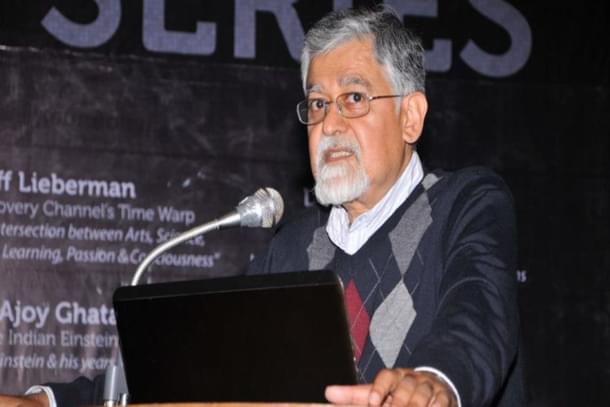News Brief
NITI Aayog Member Arvind Virmani Predicts 6.5 Per Cent GDP Growth For Current Fiscal Despite Global Uncertainties
Bhuvan Krishna
Sep 21, 2023, 02:45 PM | Updated 02:45 PM IST
Save & read from anywhere!
Bookmark stories for easy access on any device or the Swarajya app.


NITI Aayog member Arvind Virmani in an interview to PTI has stated that his projection for India's GDP growth is 6.5 per cent, with a margin of error of plus or minus 0.5 per cent.
This is notwithstanding high crude oil prices and increased uncertainty due climate changes.
He explained that this estimate is based on the balancing effect of global GDP (gross domestic product) fluctuations, assuming normal changes.
Regarding claims made by certain US-based economists that India is overstating its economic growth, Virmani observed that some former officials lack an understanding of how GDP is constructed due to their academic background.
Looking back 10 years ago, Saudi Arabia and the US were on the same geopolitical platform and used to coordinate their actions. However, this dynamic has changed in the last five years, according to Virmani.
In a significant development, international crude oil prices have surpassed the $90 per barrel mark for the first time in 10 months and are currently around $92 per barrel.
A notable trend observed recently is that both Saudi Arabia and Russia have reduced their oil production when prices reached reasonable levels.
According to Virmani, the uncertainty surrounding El Nino conditions has resurfaced due to climate change. This has further exacerbated the issue.
In response to a query regarding the decline in household savings to a five-decade low, Virmani clarified that it is the net household saving that is decreasing, not the gross household savings.
Virmani explained, "The gross household savings ratio has consistently been on the rise. However, the net household savings ratio is declining due to the faster increase in consumer debt."
When questioned about the significance of the decline in net household savings, Virmani pointed out that economists specialising in macroeconomics have consistently stated that India's debt-to-GDP ratio is relatively low.
During discussions, it has been observed that India has been compared to every country in the world in terms of debt-to-GDP ratio.
Experts have consistently pointed out that there is a significant potential for increasing this ratio in India.
It is worth noting that the debt-to-GDP ratio for households in India is currently at a manageable level and is not excessively high or unsustainable.
According to Virmani, the government has also effectively managed food inflation.
Bhuvan Krishna is Staff Writer at Swarajya.





